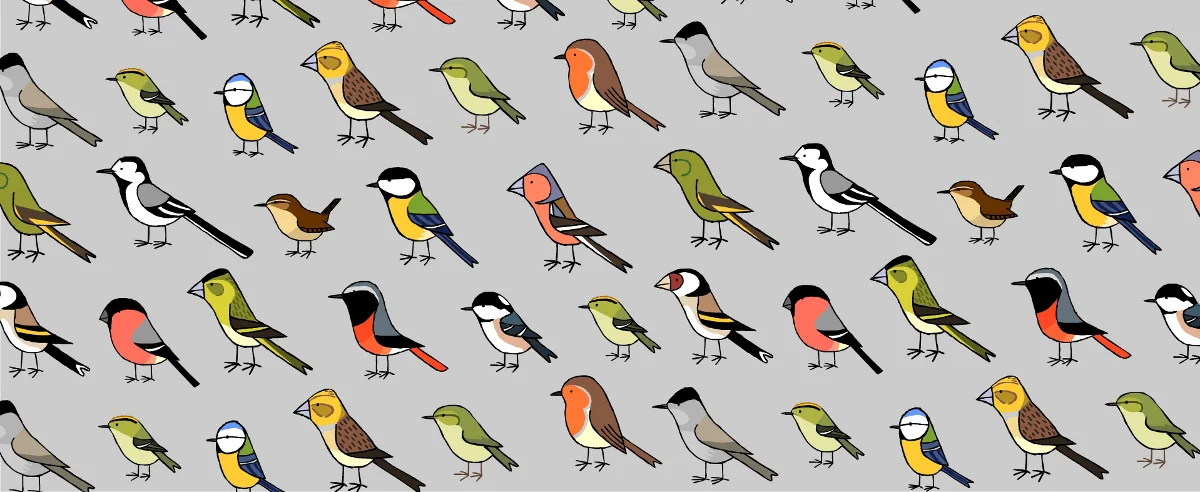In the United States, there are 15 species of hummingbird, with 14 of these occurring in the Western U.S. However, during this past week, 4/15 species have been calling our state home. There have been confirmed sightings of Rufous (Trade, Johnson County) Black-chinned (Knoxville, Knox County) Calliope (Ooltewah, Hamilton County) and our common Ruby-throated Hummingbird. (Brentwood) While each year we have come to expect that somebody in the state will get a western winter hummingbird, to have three different species is exciting.
The Rufous Hummingbird is the most commonly reported wintering western species of hummingbird in Tennessee and the eastern U.S. as a whole. Their range extends from southeastern Alaska to as far south as southern Mexico. Normally, they would follow the Pacific coast north to their breeding range, and then follow the Rocky Mountains south again. Why some individuals end up as far-east as Tennessee we are not sure, but as recently as 2021 one of our customers in Bellevue had a confirmed sighting of a Rufous Hummingbird.
The Black-chinned Hummingbird has a similar range in the West as the Rufous, although they do not breed as far north. Inhabiting a diverse range of habitats from deserts to mountains, it was certainly a surprise when one turned up in Rocky Top! This is not their first time visiting the Volunteer State, with isolated sightings throughout the 1990s and into the early 2000s.
The Calliope Hummingbird might be generating the most buzz. The smallest species of hummingbird found in the United States, this tiny interloper to Hamilton County would ordinarily be spending its winter in the pine-oak forests of southwestern Mexico. As surprising a visitor as it is however, it isn’t the first time a Calliope has turned up in Hamilton County with the last reported sighting being in January of 2001.
You may be wondering how a little hummingbird is able to survive the winter, and the reasons are quite fascinating. Many species of western Hummingbirds encounter areas where weather can be unpredictable, such as the elevations of the Rocky Mountains where temperatures can drop to near or below freezing nightly. One method they can use to survive this is something called Torpor. In this near hibernation state, they are able to drastically reduce their metabolism to a fraction of what it is during the day, and this helps conserve enough energy that they can survive the cold night. We could write an entire blog about torpor, but for those of you that want more information, we will link an interesting article published by Washington University. Also, contrary to popular belief, hummingbirds are not reliant on sugar water or plant nectar to survive. Most of their diet is made up of insects, and even on days that may feel cold to us, these are still readily available. Lastly, because of the areas that they inhabit, they are simply better adapted to cold temperatures than our eastern Ruby-throated Hummingbirds. Compared to the Rocky Mountains in early and mid-spring, December in the parts of east Tennessee where these birds are being seen is a breeze for these hardy hummers.
A Surprise Encounter
As John and his wife were walking through Pegram’s Gossett Tract, they were surprised by an explosion of brown that flew almost straight up in front of them before flying off a short distance and descending back into the shrubby field, out of sight. A crow-sized bird, it was too large to be a Northern Bobwhite, but too small to be a turkey or escaped pheasant. What it turned out to be was a Ruffed Grouse, a bird that is usually found in the mountains of East Tennessee when it is seen in the state at all. The sighting of one of these chicken-sized forest dwellers in Cheatham County is unexpected. While the historic range of the Ruffed Grouse does encompass Middle Tennessee, they are non-migratory, so it is surprising for one to appear so far from its normal range without help. In 1986, a small population of Ruffed Grouse from East Tennessee were trapped and released at Cuba Landing in Humphreys County on Kentucky Lake. While there was initially some success, it seems unlikely that this bird is a descendent from that program, given in almost forty years there have not been sightings of Ruffed Grouse in the general vicinity of Cheatham and western counties. It is also possible that the bird was released by hunters or escaped captivity somewhere in the surrounding area.





































